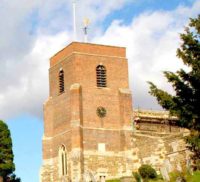All Saints church is a Grade One listed building reflecting its unique architectural and historical importance. Its structure is over 900 years old and although it bears its age well, there are inevitable changes taking place which have to be addressed if the building is to be kept in good condition for future generations.

As with any building, wind, rain, frost and ice all have their effect. The atmosphere itself plays a part in the form of changes in rain acidity, air quality and pollution. The very earth moves under it! The stone itself undergoes long term changes, usually in response to outside conditions but also by its own composition and the impurities within it. Bits fall off, they break and crumble or just decay as a natural process. Vegetation in the form of lichen and Ivy can damage the stonework.

And, of course, we ourselves have a major impact on the church. We move in it, we touch it, we breathe in it, we add bells which shake it. Sometimes we add bits on, alter it, knock bits out and from time to time repair it, hopefully giving due deference to its great age and meaning.
In addition, we demand a different experience from those who built it. We want warmth, light, a clean space, seating and other features more suited to our century rather than the 14th.
Monitoring the changes A constant watch is kept by the wardens on the building and its surrounds to identify immediate problems. A record is made of all the work that needs to be done (and funded) and priorities established.
Then, every 5 years a ‘Quinquennial Inspection’ takes place where a specialist architect examines the whole building in detail and produces a report on the state of the fabric. This report is a requirement by the Diocese in its role as the custodian of Parish Churches.
The report will specifiy what work needs to be done and recommends time scales for completion. The report issued in 2009, for instance, required that the east window of the Lady Chapel was in urgent need of renovation. This was completed in 2013.
Approving the work – All repairs, additions and modifications, no matter how small, have to be approved by the Diocese. The church makes an application for a ‘Faculty’, a document stating that a particular project can proceed as planned. Where necessary the Diocese will consult other bodies, such as English Heritage, before issuing the Faculty to ensure that any work done is in keeping with the architectural and historical integrity of the building.
Getting it done – Work on old buildings has to be undertaken by specialist craftsmen who utilise suitable materials and techniques. Masons, builders and glaziers carry on a tradition of hand crafting which has changed little over the centuries. Electrical work and plumbing is carried out by people with specialist knowledge of the sensitivities of working with ancient structures.
Naturally, all this has an impact on the cost of maintaining the building and on the time it takes to plan and complete any work. That is why time and funding are such constant themes when we try to keep the church standing!
Go to the Funding page to see how it is all paid for.


